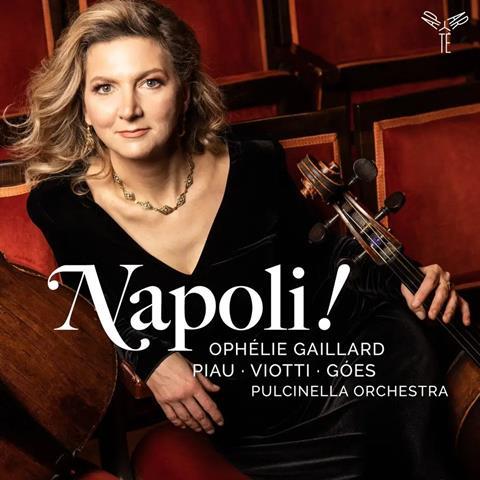A southern Italian city provides ample inspiration for an eclectic programme

The Strad Issue: February 2024
Description: A southern Italian city provides ample inspiration for an eclectic programme
Musicians: Ophélie Gaillard (cello, violoncello piccolo) Pulcinella Orchestra, Sandrine Piau (soprano) Marina Viotti (mezzo-soprano) Luan Góes (countertenor)
Works: Music by Alborea, Barbella, Bonno, Corselli, Durante, Falconieri, Fiorenza, Lanzetti, Leo, Matteis I, Ortiz, Pergolesi, Porpora, Sarro and Scarlatti
Catalogue number: APARTÉ AP326 (2 CDs)
Following her explorations of music from Madrid, Berlin, Venice and London, Ophélie Gaillard presents a selection of excerpts and complete works by composers resident in Naples from the mid-16th to the late-18th centuries. Assisted in her research by Olivier Fourés, she often utilises a violoncello piccolo, most notably for the bel canto writing in Alessandro Scarlatti’s Sonata no.1 and in the arranged Largo of Pergolesi’s Violin Concerto in B flat major. She delivers the florid passagework and dexterous cross-string figuration of the fast movements of cello concertos by Fiorenza and Leo and Alborea’s Sonata in D major with breathtaking virtuosity, produces a sonorous, expressive cantabile in the slow ‘Amoroso’ movements and shapes phrases with the utmost musicality throughout. Her deft representations of musical characterisations of commedia dell’arte figures by Matteis I (Scaramuccia) and Barbella (Sonata intitolata Arlecchino…) likewise stand out. The album also features operatic excerpts, as well as both secular and religious items; some showcase Gaillard in prominent obbligato roles, commendably fulfilled.
Watch: Cellist Ophélie Gaillard salutes Neopolitan music with an outdoor Giga
Review: Ophélie Gaillard: A Night in London
Read: Sentimental Work: Ophélie Gaillard on Bloch’s Schelomo
Gaillard’s determination to give her programming the utmost variety results in a somewhat fragmented collection overall, but her Naples-centric theme maintains a focus. Members of the Pulcinella Orchestra provide alert support, contribute solo roles as required and offer colourful continuo instrumentarium, extending even to percussion in some items (most surprisingly, the finale of Leo’s concerto).
Captured in a church acoustic, the recording has ample bloom; however, a smoother transition between the two recorded movements of Durante’s Second Concerto would have been desirable.
ROBIN STOWELL











































No comments yet